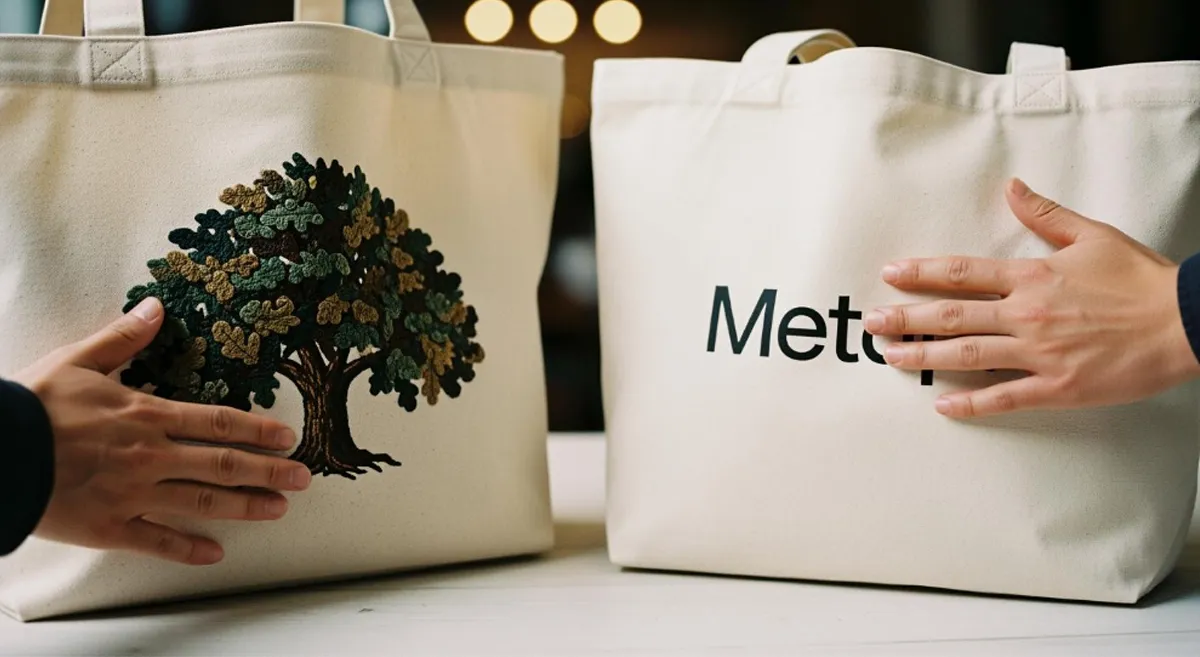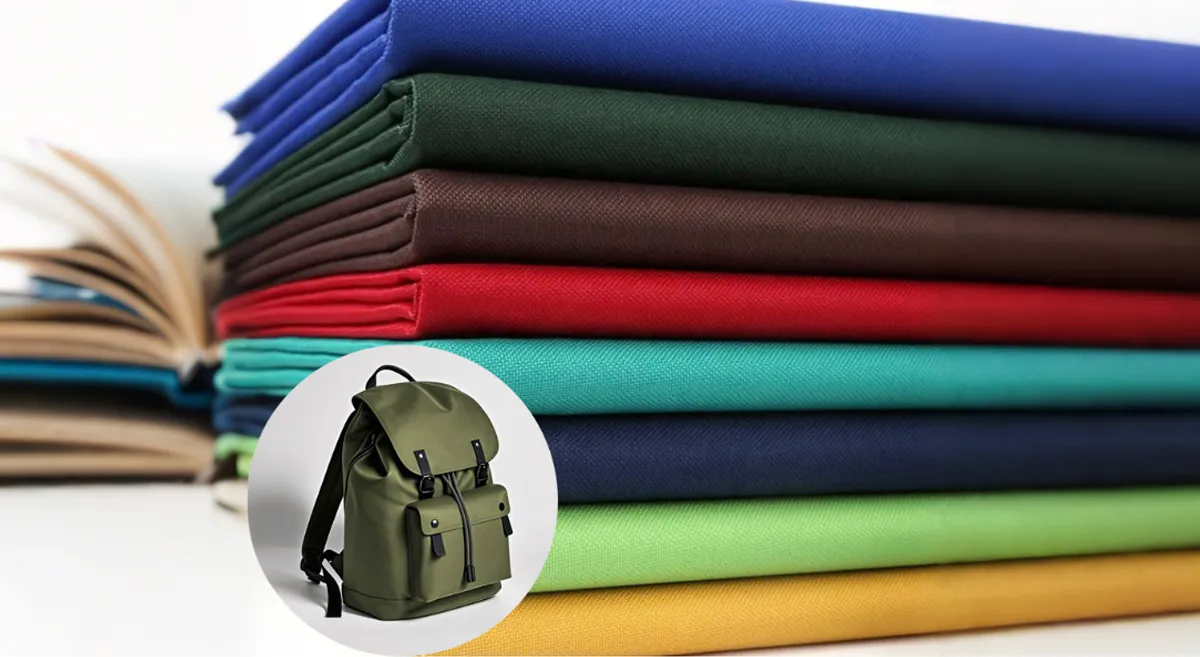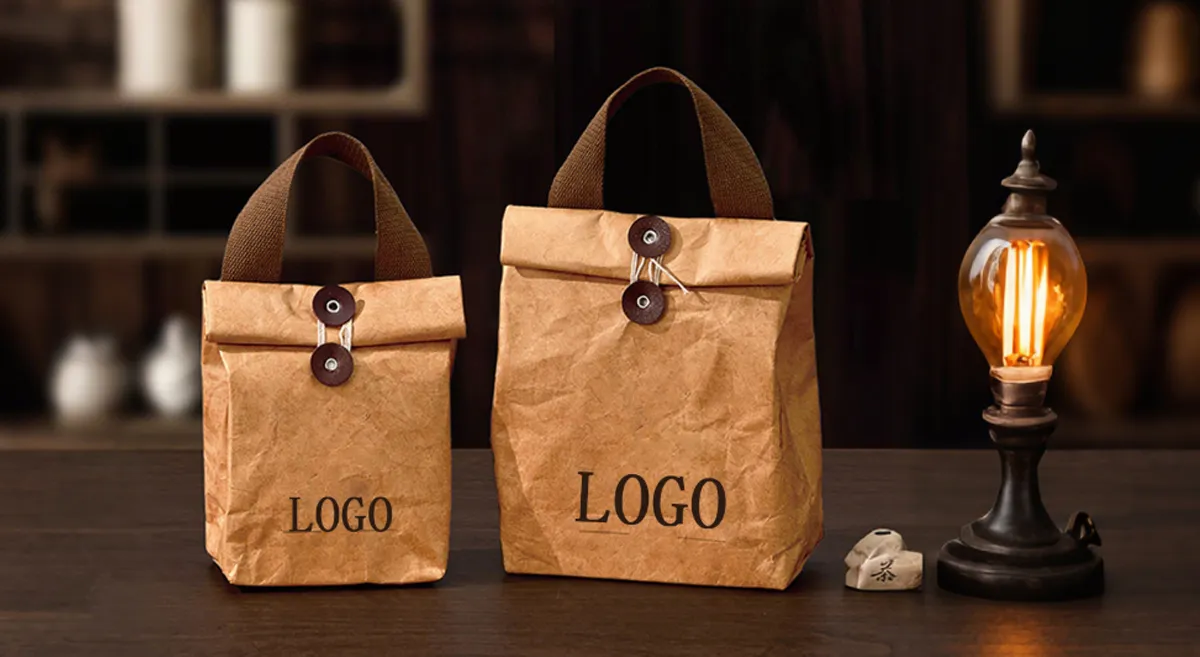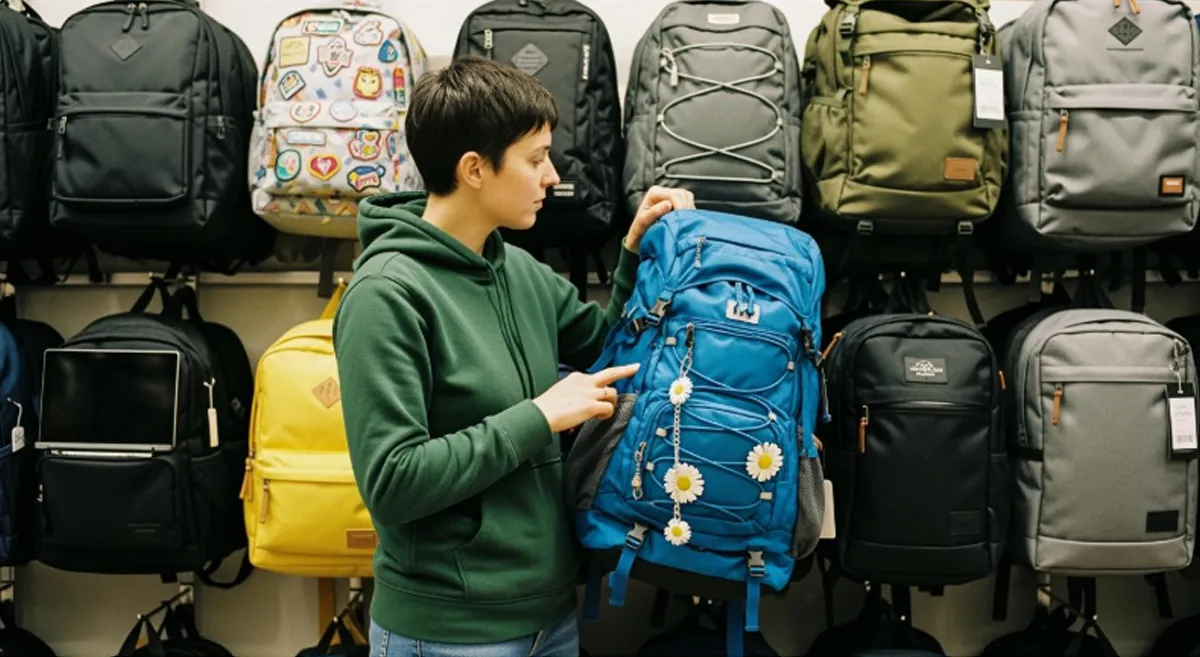
Have you ever stood in a store, staring at a wall of backpacks, feeling lost about which one to pick? You are not alone. When you ask how to choose a backpack, think first about your trip length, what you plan to carry, and how you will use it. Many people make mistakes like packing too much or forgetting to try on the backpack before buying. If you want comfort and ease, focus on fit and function, not just looks.
Common mistakes include:
- Overpacking, which makes your backpack heavy and hard to carry.
- Choosing a style that looks good but feels uncomfortable after a few hours.
Your perfect backpack should feel right for your needs, not just your eyes.
Key Takeaways
- Think about what you need before you shop. Look at how long your trip is. Think about what you will do. Decide what you need to carry.
- Do not make mistakes like packing too much. A backpack that is packed well is easier to carry.
- Pick a backpack that fits your body. Measure your torso and hips. This helps you feel comfortable.
- Find features that match your activity. Travel backpacks need good organization. Hiking packs need to be comfy and strong.
- Check the size and volume of the backpack. Make sure it matches your trip length. This helps you stay comfortable.
- Think about what you like, such as style and price. Durability is important too. Try to find a good balance for you.
- Try on the backpack and adjust the straps. Make sure it fits well before you buy. A good fit stops you from feeling uncomfortable.
- Look up brands and their warranties. A good warranty helps you feel safe about your purchase.
Identify Your Needs
Picking the right backpack starts with knowing what you need. You want a backpack that fits your life and helps you every day. Before you buy, think about how you will use your backpack. Think about how long your trips will be. Think about what matters most to you.
Intended Use
Your needs change with each activity. You might want a backpack for travel, hiking, commuting, or a hobby. Every activity needs something different.
Travel
If you travel a lot, you need a backpack that keeps things safe and neat. The best travel backpack should have space for clothes, toiletries, and tech gear. You want pockets for easy access and places for your passport or tickets. Branding and customization help your backpack stand out. Here’s a quick look at what to think about:
| Factor | Description |
|---|---|
| Branding and Customization | The backpack shows brand identity. It needs to look good and be easy to see. |
| Functional Features | Older students need backpacks with many compartments and tech sleeves. |
| Aesthetic Appeal | Looks matter, especially for promotional items. Kids and teens like different styles. |
| Target Audience | Knowing who will use the backpack helps design it well. Different ages need different things. |
Hiking & Backpacking
For hiking or backpacking, you need comfort and strength. You want a backpack that fits well and holds all your gear. The best travel backpack for hiking should have soft straps, a strong frame, and tough material. You need extra pockets for water bottles, snacks, and maps.
Daily Commute
If you use your backpack for work or school, you need something light and tidy. The best travel backpack for commuting should have a laptop sleeve, pen holders, and easy-to-reach pockets. You want a style that matches you and feels good on your shoulders.
Specialty Activities
Some people need a backpack for sports, photography, or hobbies. The best travel backpack for these needs should have special spots for equipment. You want a design that keeps your gear safe and easy to carry.
Trip Length
Trip length changes what size and features you need. If you go on overnight trips or camping, you need a medium-sized backpack (35-50 liters). This size is best for carrying heavy loads and extra gear. Here’s a simple table to help you choose:
| Backpack Size | Best For | Description |
|---|---|---|
| Medium (35-50 Litre) | Overnight Trips, Camping Trips, 3 day hikes if packing light | Made for multi-day trips. It carries heavy loads and has extra padding and pockets. |
Personal Preferences
Your personal likes help you pick a backpack. You might care about style, price, or comfort. Some people want a backpack that looks cool. Others care more about cost or how long it lasts.
Style
You want a backpack that fits your look. Men often pick backpacks for strength and quality. Women usually care more about design. Color is not important to most people, but you might have a favorite.
Budget
Your budget changes what you need. You want the best travel backpack you can buy. Some people pay more for extra features or better materials. Others look for deals or simple styles.
Here are common personal preferences:
- Functionality
- Design
- Color
- Price
- Durability
- Comfort
You need to match your needs with the right backpack features. Think about your activity, trip length, and style. When you know your needs, you can find the best travel backpack for you.
How to Choose a Backpack by Activity

Picking the right backpack depends on what you will do. You should match your backpack to your activity. This helps you get comfort and use it well. Let’s look at how to pick a backpack for travel, hiking, and daily use.
Travel Backpacks
When you travel, you need a backpack that makes things easy. You want to reach your stuff fast and keep it neat. Comfort is important for short trips. Travel backpacks are different from other backpacks because of their design.
Here’s a quick table that shows how travel backpacks are different:
| Feature | Travel Backpack | Other Backpacks (e.g., Hiking Packs) |
|---|---|---|
| Opening Style | Front-loading for easy access | Top-loading for less accessibility |
| Organization | Multiple compartments for flexibility | Less emphasis on organization |
| Comfort | Designed for short-term comfort | Built for long-term wear |
| Size | Must be carry-on sized | Varies, often larger |
| Waterproofness | Generally water-resistant | May not prioritize waterproofing |
A travel backpack should open from the front. This helps you grab your clothes or gadgets quickly. Many pockets help you keep things in order. If you fly a lot, pick a backpack that fits airline rules. Water resistance keeps your things dry if it rains.
Tip: Pack your travel backpack before your trip. Check if you can reach everything without emptying the bag.
Hiking & Backpacking Packs
If you like hiking or backpacking, you need a strong backpack. It should be comfy and have smart features. Experts say the best packs have special details to help you.
Look at these important features for hiking and backpacking packs:
| Feature | Description |
|---|---|
| Heavy-Duty, Lockable Zippers | Keeps your gear safe and secure. |
| Side Load Access | Lets you reach items at the bottom without unpacking everything. |
| Adequate Ventilation | Stops odors and keeps your gear fresh. |
| Padded Hip Belt | Gives you comfort and stability on long hikes. |
| Attachments for Tools | Holds water bottles, trekking poles, and other gear. |
| Water Resistance | Protects your stuff from rain and wet conditions. |
| Detachable Daypack | Lets you grab essentials without unpacking your whole backpack. |
When picking a hiking backpack, look for padded hip belts and strong zippers. These help you carry heavy things and keep them safe. Good airflow stops your backpack from smelling bad. Tool holders let you grab your water bottle or pole fast. For long hikes, choose a pack with a detachable daypack. You can leave your big pack and take only what you need.
Note: Always try on hiking backpacks before you buy. Adjust the straps and hip belt to see if it feels good.
Everyday Bags
You use everyday bags for school, work, or fun. These backpacks focus on style and easy use. There are many types of backpacks for daily life. Each one fits a different need.
Here’s a table showing popular everyday bags and how people use them:
| Bag Type | Description | Typical Use Cases |
|---|---|---|
| Messenger Bag | Rectangular bag with a long shoulder strap, stylish and practical. | Work, commuting, casual outings |
| Clutch Handbags | Sophisticated bags that complement formal outfits. | Weddings, parties, date nights |
| Satchel | Spacious bags for casual outings, often used for carrying books and laptops. | School, college, work |
| Briefcase | Ideal for work-related documents and equipment. | Business professionals, lawyers |
| Tote Bag | Casual bags with an open top, perfect for carrying essentials. | Everyday use, shopping, college |
| Fanny Pack | Versatile travel accessory, worn around the waist. | Travel, casual outings |
| Box Clutch | Elegant evening bags for formal attire. | Parties, formal events |
| Bucket Bag | Flexible bags with a drawstring closure, suitable for semi-casual outfits. | Everyday use, casual outings |
| Canteen Bag | Round handbag inspired by flask design, durable and stylish. | Fashion accessory, casual outings |
| Crossbody Bag | Small bag worn across the body for a relaxed look. | Casual outings, everyday use |
When picking a backpack for daily life, think about what you carry most. If you need a laptop, pick a satchel or tote bag with a padded sleeve. For work, a briefcase or messenger bag keeps your papers neat. If you want something light for shopping or walking, a crossbody bag or fanny pack is good.
Tip: Pick everyday bags with straps you can adjust. You want your backpack to fit your body and feel good all day.
How to choose a backpack depends on what you do. Travel backpacks help you stay neat and move fast. Hiking packs give you comfort and support for long trips. Everyday bags make your routine easier and match your style. When you know what you need, you can pick the best backpack for your life.
Technical Packs
You might need a technical pack if you do activities like climbing, skiing, mountain biking, or photography. These backpacks are built for special tasks. They have features that help you carry gear safely and stay comfortable in tough conditions.
Technical packs stand out because they focus on performance. You get pockets for tools, straps for helmets, and places for ropes or skis. Some packs even have built-in hydration systems. If you love adventure, you want a backpack that matches your sport.
Let’s break down what makes a technical backpack different:
| Feature | Why It Matters | Example Use Case |
|---|---|---|
| Gear Loops & Straps | Carry climbing ropes, ice axes, or helmets | Rock climbing, mountaineering |
| Reinforced Materials | Protects your gear from sharp rocks or falls | Mountain biking, skiing |
| Hydration Compatibility | Lets you drink water without stopping | Trail running, cycling |
| Compression Straps | Keeps your load stable and tight | Skiing, snowboarding |
| Specialized Compartments | Stores cameras, avalanche gear, or first aid | Photography, backcountry |
You want to choose a technical backpack that fits your activity. If you climb, look for gear loops and tough fabric. If you ski, pick a pack with straps for your skis and a waterproof shell. For biking, you need a slim backpack that stays close to your body.
Tip: Always check the weight of your technical pack before you buy. You want a backpack that feels light but still holds all your gear.
Here are some things to think about when picking a technical backpack:
- Size matters. You want enough space for your gear, but not too much that it feels bulky.
- Fit is key. Try on the backpack and adjust the straps. Make sure it sits snug on your back.
- Weather resistance. If you go outside in rain or snow, pick a backpack with a waterproof cover.
- Easy access. You want to reach your gear fast. Look for packs with side zippers or quick-access pockets.
Technical packs often cost more than regular backpacks. You pay for special features and strong materials. If you use your backpack for tough sports, the extra money is worth it. You get safety, comfort, and gear protection.
You might wonder if you need a technical backpack. Ask yourself these questions:
- Do you carry special equipment for your hobby?
- Will you use your backpack in rough weather or wild places?
- Do you need to keep your gear safe and organized?
If you answer yes, a technical pack is the right choice. You get a backpack that helps you do your best in any adventure.
Key Features to Consider
Size & Volume
Optimal Capacity
You need a backpack that is not too big or too small. Think about what you carry most days. If you only bring a few things, pick a small backpack. If you travel or hike, you need more space. The size of your backpack affects how comfortable it feels. It also helps you stay organized. Always check the size before you buy.
Volume Recommendations
Picking the right size helps you avoid packing too much or too little. Here’s a simple table to help you:
| Trip Duration | Recommended Volume (Liters) |
|---|---|
| Day Trip | 15 – 35 |
| Weekend Trip (1-3 Nights) | 40 – 50 |
| Multi-Day Trip (3-7 Nights) | 50 – 70 |
| Expedition (More than a week) | 80 – 110+ |
If you go on a day hike, use a backpack with 15 to 35 liters. For a weekend trip, pick one with 40 to 50 liters. If you travel for many days, choose 50 to 70 liters. Long trips need even more space. Match your backpack size to your trip.
Organization
Compartments
Compartments help you keep your things neat and easy to find. Many backpacks have pockets for water bottles, snacks, and pens. Some backpacks, like the Incase Icon, have lots of compartments and soft pockets for tech. The North Face Recon has soft pockets for glasses and big water bottle pockets. These features help you stay organized and save time.
Tech Pockets
Tech pockets are important if you carry gadgets. You need a safe place for your laptop, tablet, or phone. Backpacks like the Yorepek Travel Extra Large and Matein Travel have big laptop pockets and spots for water bottles. Tech pockets keep your devices safe and easy to reach. You do not have to dig in your bag for your charger or headphones.
Tip: Pick backpacks with tech pockets if you use electronics every day. Your gear will be safe and easy to find.
Durability
Materials
Durability is important when you pick a backpack. You want a bag that lasts through school, trips, and outdoor fun. Here’s a table that shows common materials:
| Material | Durability | Water Resistance | Weight | Best For |
|---|---|---|---|---|
| Cordura Nylon | ★★★★★ | ★★★★☆ | Medium | Daily wear, heavy use |
| Ballistic Nylon | ★★★★☆ | ★★★★☆ | High | Business + tech |
| Polyester | ★★★☆☆ | ★★★☆☆ | Light | Occasional use |
| Canvas | ★★★★☆ | ★★☆☆☆ | Heavy | Urban/vintage lifestyle |
| Leather | ★★★★☆ | ★★☆☆☆ | Heavy | Professional settings |
| rPET/Recycled | ★★★★☆ | ★★★☆☆ | Light-Med | Eco-conscious users |

Cordura nylon is strong and keeps water out. Ballistic nylon is good for work and tech. Polyester is light but not as tough. Canvas and leather look nice and are strong but feel heavy. Recycled materials like rPET are good for the planet and last a long time.
Weather Resistance
Weather resistance helps your backpack work in different weather. Winter backpacks use thick, water-resistant fabric to keep things dry. Summer backpacks use lighter, airy fabric to keep you cool. Pick a backpack that fits your weather and activities.
Note: If you travel a lot or hike in wet places, get a backpack with strong weather resistance. Your things will stay dry and you will have a better trip.
Security
When you choose a backpack, you want your things safe. Security features help protect your stuff, especially in busy places. You may forget about security, but it is important.
Lockable Zippers
Lockable zippers help you feel calm. You can use a small lock or hide the zippers under flaps. This makes it hard for someone to open your bag without you seeing. If you ride crowded buses or walk in busy streets, lockable zippers keep your things safe.
Some backpacks have zippers that work with travel locks. Some zippers hide under fabric covers so people cannot see them. You may want to use a lock if you leave your backpack in a hostel or hotel. Lockable zippers are good for keeping your laptop, passport, and wallet safe.
Tip: Always check if the zippers feel strong and smooth. Weak zippers break fast and make your bag less safe.
Hidden Pockets
Hidden pockets help protect your important things. These pockets are hard to see, so thieves cannot find them easily. You can use hidden pockets for your passport, cash, or keys. Some backpacks have secret spots inside or behind the back panel.
When you travel, you want your important items close. Hidden pockets help you do this. You can reach your things when you need them, but others cannot see where you keep them. Many backpacks for city or travel have hidden pockets for extra safety.
Here is a table with popular security features for backpacks in cities or travel:
| Security Feature | Description |
|---|---|
| Multiple Compartments | Spreads out valuables, so thieves cannot grab them fast. |
| Hidden Pockets | Keeps passports, wallets, and other small items in hard-to-find places. |
| Lockable Zippers | Zippers that you can lock or hide behind flaps. |
| Quick-Access Pockets | Lets you get things like maps or travel papers fast. |
| RFID-Blocking Technology | Stops electronic pickpocketing by blocking radio waves from cards. |
| Designated Tech Areas | Has padded spots for laptops and tablets to keep them safe. |
You do not need every security feature, but lockable zippers and hidden pockets help a lot. If you use your backpack for travel or busy places, these features keep your things safe. You can relax and enjoy your trip without worrying about theft.
Note: Try to organize your backpack so you know where everything is. This helps you find your valuables fast and keeps them safe.
A secure backpack helps you focus on your day. You do not have to worry about losing your passport or phone. When you pick a backpack, look for lockable zippers and hidden pockets. These simple features help keep you safe and give you peace of mind.
Fit and Comfort
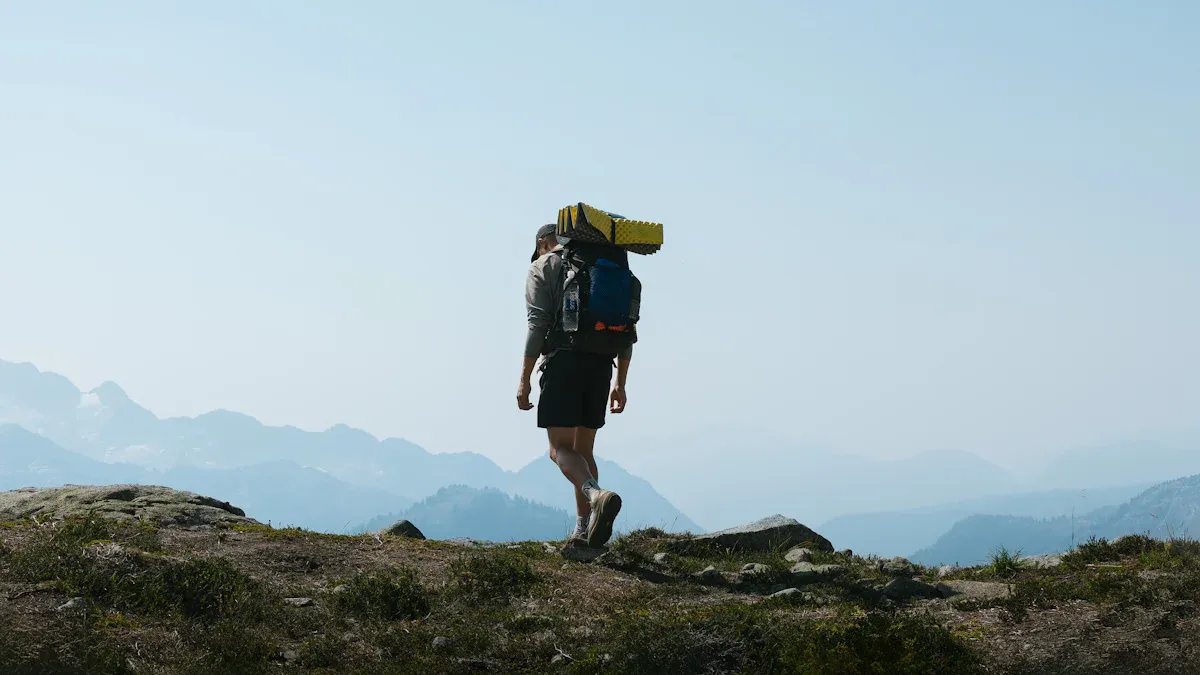
Choosing a backpack that fits you well makes every trip easier. You want to feel good when you carry your backpack, whether you walk to school or hike up a mountain. Let’s talk about how you can measure for a good fit and get the most comfort.
Measuring for Fit
Torso Length
Your torso length matters more than your height when you pick a backpack. If you want a backpack fit that feels right, you need to measure your torso. Here’s how you can do it:
- Stand up straight and bend your head forward. You will feel a bump at the base of your neck. That’s your C7 vertebra.
- Put your hands on top of your hip bones. This is where your backpack will rest.
- Measure the distance from your C7 vertebra down to the spot between your thumbs. This number is your torso length.
Backpacks come in different sizes. You can use this guide to match your torso length:
- Extra Small: 14 & 15 inches
- Small: 16 & 17 inches
- Medium: 18 & 19 inches
- Large: 20 & 22 inches
If you choose the right size, you get a good fit and better comfort.
Hip Size
Your hips help carry the weight of your backpack. Most of the load should sit on your hips, not your shoulders. You can measure your hip size by wrapping a tape measure around the top of your hip bones. When you pick a backpack, check if the hip belt fits snugly. A hip belt that fits well gives you a comfortable carry and keeps your backpack steady.
Adjustability
Straps & Belts
Adjustable straps and belts help you get the best comfort. You can change the shoulder straps, chest strap, and hip belt to fit your body. Pull the straps until the backpack sits close to your back. The hip belt should hug your hips, and the shoulder straps should not dig in. If your backpack has load lifters, use them to pull the top of the pack closer to your shoulders. This helps balance the weight.
Tip: Try adjusting your backpack before you leave home. Walk around and see how it feels. You want everything to stay in place.
Weight Distribution
A backpack that spreads weight evenly feels much lighter. You should pack heavy items close to your back and near your hips. This keeps the load balanced and helps you move easily. If your backpack has a frame, it helps with weight distribution. You will notice more comfort and less strain on your shoulders. When you pack smart, you get a comfortable carry every time.
A good fit and smart adjustments make your backpack feel like part of you. You can enjoy your day, your hike, or your trip without pain. Always check the fit and comfort before you buy a new backpack.
Choose the Best Backpacking Backpack
Define Your Needs
You want to choose the best backpacking backpack for your adventures, but first, you need to figure out what you actually need. Start by thinking about the kind of trips you take most often. Do you go on weekend hikes, long camping trips, or quick overnight getaways? The right backpack depends on your gear, food, and water needs.
Here’s a simple way to break it down:
- Decide how much space you need. Look at your gear and ask yourself, “Will this all fit?” If you carry a lot, you need a bigger backpack.
- Buy your backpack after you get your other gear. This way, you know exactly how much room you need.
- Use the 80-20 rule. Pick a backpack that works for most of your trips, not just the rare ones.
- Make sure the backpack fits your body. Comfort matters more than style.
- Learn how to pack your backpack so the weight feels balanced. A well-packed backpack makes hiking easier.
If you take these steps, you’ll find a backpack that matches your adventures and feels good every time you wear it.
List Essential Features
When you want to choose the best backpacking backpack, you need to look for features that make your trip easier. Experienced hikers always check for certain things before they buy.
Here’s a table to help you see what matters most:
| Feature | Description |
|---|---|
| Fully adjustable suspension system | Lets you change the fit for your body, so you stay comfortable and balanced. |
| Quick access outer pockets | Helps you grab snacks, maps, or rain gear without digging through your whole backpack. |
| Separate bottom compartment & access | Makes packing easier and keeps heavy items close to your back for better balance. |
| External straps & loops | Lets you attach extra gear like sleeping bags or wet clothes outside your backpack. |
| Easy-to-open system | Makes it simple to get to your stuff, even if the weather is bad. |
| Internal compartment for hydration system | Keeps your water safe and easy to reach. |
| Spacious hip belt pocket | Gives you a spot for small things like snacks or a phone, so you don’t have to stop and unpack. |
| Detachable small backpack | Perfect for short hikes away from camp. |
| Flexible water bottle pocket | Lets you grab your water without taking off your backpack. |
| Integrated rain cover | Protects your gear from rain, so you don’t need to carry an extra cover. |
If you find a backpack with these features, you’ll have an easier time on the trail. You won’t waste time searching for things or worrying about comfort.
Tip: Always check if the backpack has a rain cover and adjustable straps. These two features can save you a lot of trouble in bad weather or on long hikes.
Test for Fit
Before you buy, you need to check fit. This step helps you avoid pain and makes your trip more fun. You should always try on the backpack in a store if you can.
Follow these steps to make sure your backpack fits:
- Put the backpack on and wear it loosely at first.
- Buckle the waist belt so it sits on your hip bones. Adjust it until it feels snug but not tight.
- Tighten the shoulder straps so they hug your shoulders. They should not pinch or rub.
- Adjust the load-lifter straps. These should pull the backpack closer to your back and form a 45-degree angle.
- Buckle the sternum strap. This keeps the shoulder straps in place. Make sure it feels firm but not too tight.
You can also measure your torso length to pick the right size. Visit a store and try the backpack with some weight inside. Walk around and adjust all the straps. You want the backpack to feel like part of your body, not something you’re dragging along.
Note: If you follow these steps, you’ll know right away if the backpack is right for you. A good fit means less pain and more fun on your trip.
When you choose the best backpacking backpack, you need to define your needs, look for the right features, and always check fit before you buy. These steps help you find a backpack that works for your adventures and keeps you comfortable every mile.
Compare Options
Now that you know what you need, it’s time to compare your backpack choices. You want to find the one that feels right for you. Don’t just look at the price or color. Focus on how each backpack matches your needs and your body.
Here’s what you should check when you compare:
- Comfort: Try on each backpack if you can. See how it feels on your shoulders and hips. Some backpacks, like the Gregory Paragon, Deuter Aircontact Ultra, and Osprey Atmos, are known for their comfort. Walk around the store with the backpack on. If it feels good, that’s a great sign.
- Features: Look at what each backpack offers. Do you need lots of pockets? Do you want a special place for your water bottle or sleeping bag? Heavier backpacks often have more features. The Osprey Atmos stands out for its many options.
- Durability: Think about where you’ll use your backpack. Will you hike in rough places or travel a lot? You want a backpack that can handle tough conditions. The Osprey Aether is famous for being strong and lasting a long time.
- Weight: If you want to keep your pack light, check out ultralight backpacks. Make sure they still have the features and strength you need. A lighter backpack helps you move faster and feel less tired.
You can make a simple table to compare your top choices:
| Backpack Model | Comfort | Features | Durability | Weight | Price |
|---|---|---|---|---|---|
| Gregory Paragon | High | Medium | Medium | Light | $$$ |
| Deuter Aircontact Ultra | High | Medium | High | Medium | $$$ |
| Osprey Atmos | High | High | Medium | Medium | $$$$ |
| Osprey Aether | Medium | High | High | Heavy | $$$$ |
Tip: Write down what you like and don’t like about each backpack. This helps you remember which one fits you best.
Make Your Decision
You’ve compared your options. Now, you need to choose the best backpacking backpack for your adventure. Think about what matters most to you. Don’t rush. Take your time and make sure you feel good about your choice.
Here’s a step-by-step way to make your final decision:
- Trip Length: Pick a backpack size that matches your trips. For short hikes, choose a small backpack. For longer trips, go bigger.
- Climate: If you hike in wet places, get a backpack with waterproof fabric. If you go to cold mountains, look for reinforced spots for ice axes or crampons.
- Gear Load: If you carry heavy gear, choose a backpack with a strong frame and modular design. This helps you stay comfortable and organized.
- Weight Distribution: Make sure the backpack spreads weight evenly. This keeps you from getting tired or sore.
- Modular Design: Some backpacks let you add or remove parts. This is great if you want to change your setup for different trips.
- Frame Engineering: A good frame helps the backpack stay stable and comfortable.
- Ventilation: Look for backpacks with mesh panels or airflow systems. These keep your back cool and dry.
- Integration with Other Gear: Check if your backpack works well with your sleeping bag, tent, or water system.
- Sustainability: If you care about the planet, pick a backpack made from recycled materials or eco-friendly fabrics.
Note: Always try the backpack with some weight inside before you buy. You want to know how it feels when it’s full.
When you follow these steps, you’ll find a backpack that fits your body, holds your gear, and matches your adventures. You’ll feel confident and ready for anything. Remember, the best backpack is the one that helps you enjoy your journey and keeps you comfortable every step of the way.
Special Considerations
When you choose a backpack, you want it to fit your body and support your health. You might also care about the planet. Let’s look at some things that can help you make the best choice.
Body Type
Gender-Specific Fit
Your body shape changes how a backpack feels. If you have a smaller frame or shorter torso, you might find women’s backpacks more comfortable. These backpacks use narrower, contoured straps and suspensions. They hug your shoulders and sit better on your back. You get less pressure on your shoulders and more support from cushioned hip belts. This design helps balance the load and keeps you comfortable, even on long walks. If you use a men’s pack with a broad fit, it might feel loose and cause strain.
Plus Size & Petite
Backpacks come in many sizes. If you are plus size, look for a backpack with longer straps and a wide hip belt. This helps you adjust the fit and keeps the pack steady. Petite users need a backpack with a shorter torso length and smaller frame. You want the pack to sit just right, not too high or low. Try on different backpacks and adjust the straps until you find one that feels good.
Tip: Always check the size chart before you buy a backpack. You want a fit that matches your body, not just your height.
Health & Ergonomics
Back Support
You want a backpack that keeps your back healthy. Look for wide, padded shoulder straps. These spread the weight and stop pressure points. A structured base helps the backpack sit upright and keeps your spine straight. Waist and chest belts move the weight to your hips and make the backpack stable.
Padding
Padding matters for comfort. Soft padding on the back panel and straps helps you carry the backpack longer. You should always wear both straps. This keeps the weight even and stops shoulder pain. Place heavy items close to your back. Carry only what you need. Most experts say you should not carry more than 10–15% of your body weight in your backpack.
Here’s a quick checklist for healthy backpack use:
- Use wide, padded straps.
- Make sure the backpack sits just below your shoulders and above your hips.
- Use compartments for heavy items.
- Clean out your backpack every week.
Note: Take off your backpack when you stand still for a long time. This helps your spine rest.
Eco-Friendly Choices
You might want a backpack that helps the planet. Many brands use eco-friendly materials. You can find backpacks made from organic cotton, recycled polyester, hemp, or recycled nylon. These materials use less energy and water. They also help reduce waste.
- Organic cotton feels soft and is grown without harmful chemicals.
- Recycled polyester comes from old plastic bottles.
- Hemp is strong and grows fast.
- Recycled nylon uses old fishing nets and fabric scraps.
If you care about nature, pick a backpack with eco-friendly labels. You help protect the earth and get a strong, stylish pack.
Choosing an eco-friendly backpack is a simple way to make a big difference.
Budget & Value
When you pick a backpack, you need to think about your money. You want a backpack that works for you and lasts a long time. It should not cost too much. Let’s see how you can make a good choice.
Price Range
Backpacks can be cheap or expensive. Some cost less than a meal. Others cost as much as a phone. The price depends on the type, size, and features. Here’s a table to show what you might pay for different backpacks:
| Category | Backpack Name | Price |
|---|---|---|
| Everyday | Volher Travel | $40 |
| Everyday | Timbuk2 Authority Deluxe | $169 |
| Everyday | REI Co-op Flash 22 | $60 |
| Hiking | REI Co-op Traverse 35 | $159 |
| Hiking | Deuter Speed Lite Pro 25 | $130 |
| Hiking | Gregory Zulu 30 | $180 |
| Hiking | Osprey Stratos 36 | $220 |
Everyday backpacks usually cost less than hiking backpacks. Some travel backpacks, like the Cotopaxi Allpa 35L or Osprey Talon 22, cost more. This is because they have extra features or special materials.
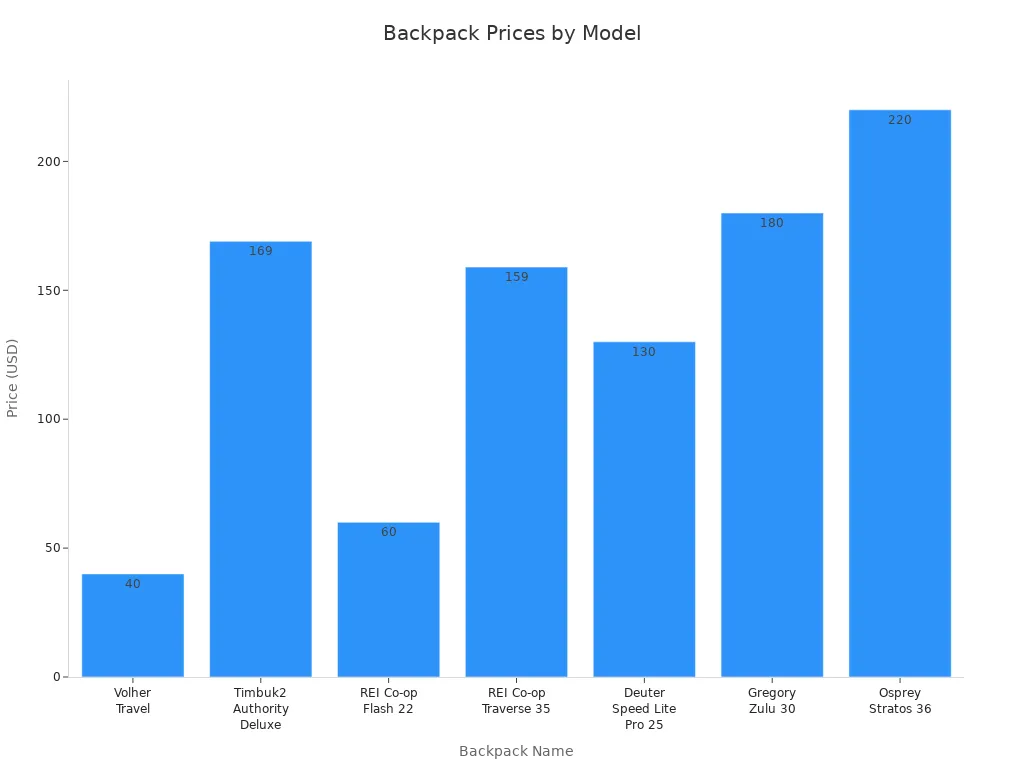
Tip: Make a budget before you shop. This helps you look at backpacks you can afford.
Cost vs. Quality
You might think expensive backpacks are always better. Sometimes, you pay more for a brand or cool look. Other times, you get better fabric, strong zippers, or more comfort. Think about how much you will use your backpack. If you use it a lot, spending more can save you money later.
Look for these things when you compare cost and quality:
- Strong stitching and tough fabric
- Straps that feel good and have soft padding
- Pockets that help you stay organized
- Water resistance or a rain cover
Cheap backpacks might look nice but break fast. A good backpack lasts longer and feels better to carry. You do not need the most expensive one. But do not pick the cheapest just to save money.
Warranty
A good warranty helps you feel safe. Many top brands give lifetime warranties for their backpacks. This means they will fix or replace your backpack if it has a problem from the factory. Here’s a table with some brands and their warranty rules:
| Brand | Warranty Type | Coverage Details |
|---|---|---|
| Osprey | Lifetime Warranty | Covers manufacturing defects, not normal wear and tear |
| Arc’teryx | Lifetime Warranty | Varies by product, generally covers defects only |
| Victorinox | Lifetime Warranty | Includes repairs for manufacturing defects |
| Patagonia | Lifetime Warranty | Covers defects, excludes normal wear and tear |
| JanSport | Lifetime Warranty | Known for durable products and supportive policies |
| Dakine | Lifetime Warranty | Offers reliable warranty service for their backpacks |
If you buy a backpack with a good warranty, you know the company will help you. You can use your backpack for years and not worry. Always check the warranty before you buy. It can help if something breaks.
Note: Keep your receipt and register your backpack if needed. This makes it easier to get help if you have a problem.
A smart shopper looks at price, quality, and warranty together. You want a backpack that fits your budget, lasts a long time, and comes with help if you need it.
Conclusion
Choosing the right backpack starts with knowing your needs and matching them to the right features. Try these steps:
- Decide what you will carry and for how long.
- Check the padding on the shoulders and waist for comfort.
- Look for breathable mesh and strong zippers.
- Pick a backpack with both large compartments and small pockets.
Try on different backpacks before you buy — comfort and quality matter. But when you need custom backpacks built for your business, partner with INITI, a trusted backpack manufacturer and OEM/ODM supplier in China.
Here’s why leading brands choose INITI:
| Benefit | Description |
|---|---|
| Customization Options | Create backpacks that match your brand identity — from size and color to logo printing and materials. |
| Strict Quality Control | Every backpack is inspected to meet international manufacturing standards before shipment. |
| Material Variety | Choose from durable, lightweight, and eco-friendly fabrics to fit your market needs. |
| Flexible Order Quantities | Low MOQ for startups, bulk capacity for established brands — we scale with your business. |
| Innovative Designs | Our R&D team helps you develop functional and trend-driven backpack styles. |
Whether you’re sourcing for retail, corporate gifts, or promotional use, INITI provides one-stop custom manufacturing to bring your ideas to life. Contact INITI today to get a backpack solution that fits your brand and your market.
FAQ
How do I know what size backpack I need?
You should think about what you want to carry. Try to pack your things and see how much space you need. Most people use 15–35 liters for daily use and 40–70 liters for trips.
Can I use one backpack for everything?
You can use one backpack for many things, but it may not work best for every activity. If you travel, hike, and go to school, you might want different backpacks for each.
What is the most important feature in a backpack?
Fit and comfort matter most. If your backpack feels good on your shoulders and back, you will enjoy using it. Always try it on before you buy.
How do I clean my backpack?
Empty your backpack first. Use a soft brush or cloth with mild soap and water. Let it air dry. Avoid putting it in the washing machine unless the label says it is safe.
Are expensive backpacks always better?
Not always. Some expensive backpacks have extra features or strong materials. You can find good backpacks at lower prices if you check the quality and fit.
How can I keep my things safe in my backpack?
Use lockable zippers and hidden pockets for your valuables. Keep your backpack close to you in crowded places. Stay aware of your surroundings.
What should I do if my backpack feels uncomfortable?
Adjust the straps and hip belt. Make sure the weight sits on your hips, not just your shoulders. If it still hurts, try a different size or style.


